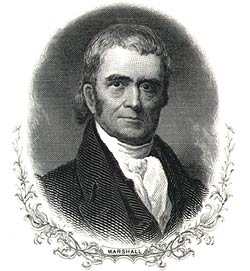 |
Manifest Destiny |
 |
Broadsides |
 |
Buffalo |
 |
Cultures |
 |
Population |
 |
Resources |
|
|

Manifest Destiny by W. M. Cary, c. 1876
Manifest Destiny: Clash of Cultures
Prior Knowledge:
The discovery of gold in Georgia
led to a tragic story in American history. As the number of settlers
grew, there was a push to displace the Native
people who lived there. In 1830 the Congress of the United States passed
the "Indian Removal Act." This opened the door to removing
the Cherokee people from the State of Georgia. Before any Native Americans
were forced to move, Chief Justice John Marsall of the Supreme Court
ruled
that the land was sovereign. He said the Cherokees would have to agree
to move by signing a treaty with the United States. There were supporters
and opponents on both sides. Daniel Webster, Henry Clay and Davy Crockett
supported the Cherokee along with John Ross, Cherokee Chief, who fought tirelessly for the Cherokee against the Georgia and federal governments. The number of Cherokees supporting a treaty
was
small compared to the 17,000 who made up the tribe. In this case the
minority ruled and the Treaty of New Echota was signed by President
Andrew Jackson March 1, 1836. The
result of this act was the Trail of Tears where Native Americans were forced to walk
from Georgia to Oklahoma under very harsh conditions. Over 4,000 lives
were lost.
This is only one example of the clash between cultures that began when
European settlers arrived in America. The idea of manifest destiny was
being used long before John O'Sullivan, an editor for the United States
Magazine and Democratic Review, coined the term in 1845.
Our manifest destiny [is] to overspread the continent allotted by Providence
for the free development of our yearly multiplying millions.
John L. O'Sullivan, 1845
What is manifest destiny? What were some of the reasons that led to manifest
destiny. What effect did it have on the people, the land, and the wildlife?
Your history book is one source for information, but there are many documents,
photographs, and other artifacts that were created at the time of an event.
These primary resources also help to tell the story about history. Using
the primary resources from the Library of Congress, your history book,
and other sources, answer these questions and those on the next set of
pages.
The following pages are examples of lessons that would tie in to a
larger unit. |
|

Chief Justice John Marshall

President Andrew Jackson

John Ross, Cherokee Chief 1828-1866
|



